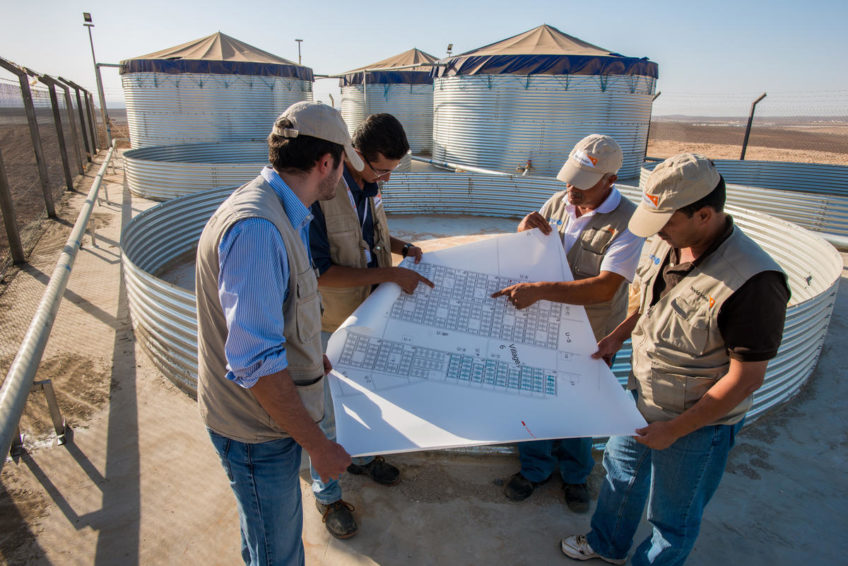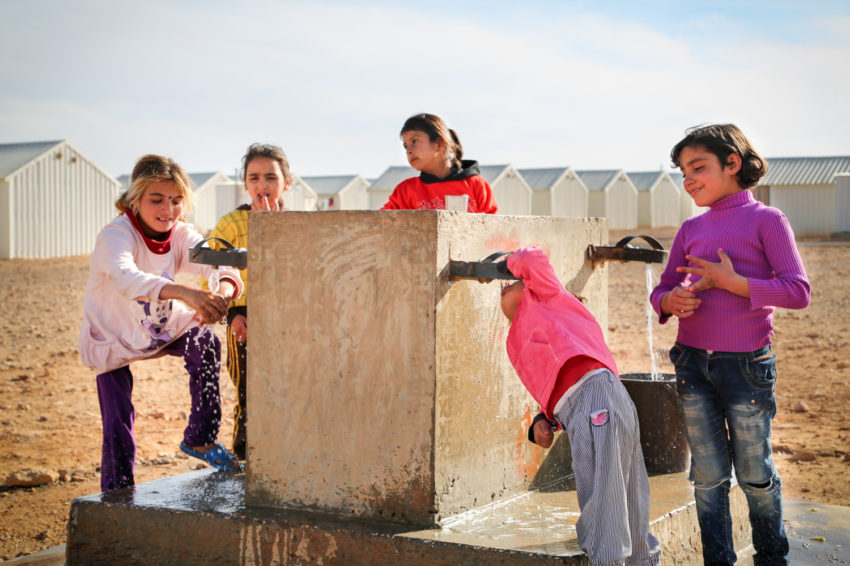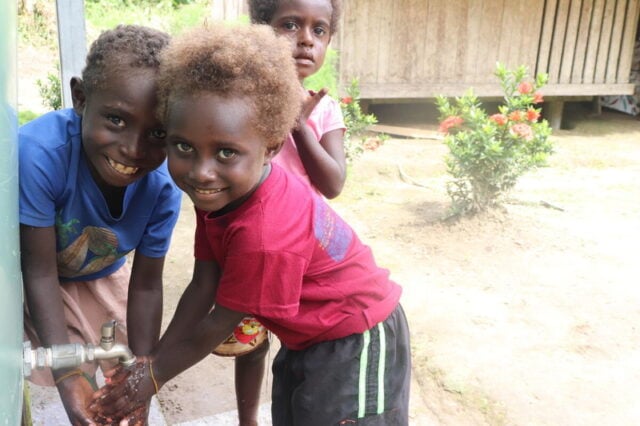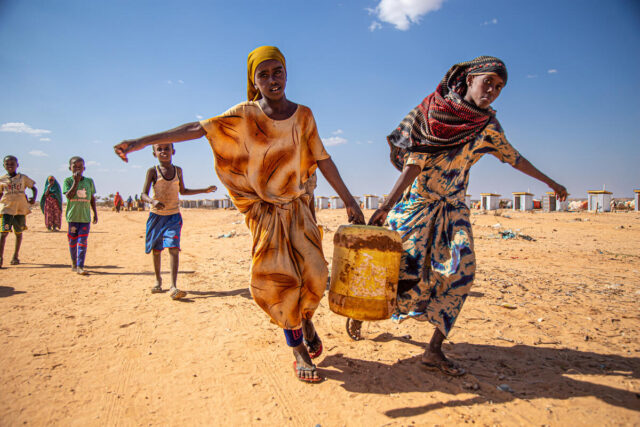When disaster strikes, access to clean water is critical for people’s survival and communal health. Different situations require different approaches. Here are three different ways World Vision emergency responders bring life-saving clean water in emergencies around the world.
Building a water system from scratch in the desert
In Jordan, one of the world’s most water-scarce countries, World Vision constructed the water, sanitation, and hygiene (WASH) system for part of Azraq camp for Syrian refugees. Here’s a breakdown of how it happened.
- Government officials and members of the United Nations Refugee Agency (UNHCR) selected a site to host refugees.
- A cooperative of Jordanian, United Nations, and aid agencies designed and laid out the details of the new camp with safety, comfort, and cultural considerations in mind.
- The WASH cooperative approved World Vision to build the WASH systems for a section of the camp that will host up to 30,000 people.
- Staff prepared site plans and work orders and then hired local contractors.
- Staff made the new borehole sites accessible for water trucks, securing it with fencing and pavement.
- Contractors dug trenches and ordered pipes, valves, faucets, metal sheets and hardware for latrines and shower stalls. Local manufacturing companies constructed 2,700 concrete septic tanks.
- Staff supervised the installation of the system, including nearly 7 miles of pipeline to bring water from the tanks to 156 taps.
- Engineers turned on the water.
- Engineers managed the system for two years, monitoring water quality and regulating flow.
- Staff conducted hygiene training sessions with refugees in schools and health centers to improve health and general hygiene.
- Staff designed an exit strategy, handed over the work to UNHCR, and, eventually, to the camp residents themselves.
Surviving after a rapid-onset disaster
Hurricane Maria destroyed Puerto Rico’s electrical grid. Many communities lost water service. Here’s one way fast-acting aid workers brought clean water to storm survivors.
- World Vision staff contacted a corporate partner to purchase or receive a donation of mobile high-volume water filtration units for survivors who urgently needed clean drinking water. These systems can filter about 10 gallons of water per minute and serve hundreds of people daily.
- A Puerto Rico-bound cargo plane transported the filters and other supplies to the disaster zone.
- Upon arrival, a local transport company picked the units up and delivered them to World Vision’s local church partner.
- Staff donated units to partners like the International Medical Corps, which used them in four clinics that treated people seven days a week. Each clinic can filter an estimated more than 4,800 gallons of water per day to serve patients and local residents.
- One unit stayed with the church, so World Vision-trained local staff could filter water for families in the city and surrounding areas. Other units were donated to partner organizations to serve their communities as needed.
Restoring and maintaining a water system for the long-haul
Typhoon Haiyan struck the Philippines in 2013 as one of the strongest storms on record. It left entire communities without working water and sanitation systems. Here’s how World Vision helped communities in the Philippines build back better.
- World Vision aid workers distributed supplies like bottled water, jerrycans, purification packets, and soap to help families survive immediately after the storm.
- World Vision deployed teams to promote good hygiene and safe water treatment.
- Once roads were passable, World Vision staff and local companies delivered donated generators to get water flowing again in remote, hard-hit communities.
- Engineers and local leaders rehabilitated damaged water points, allowing schools to open and families to focus on recovery.
- World Vision hired skilled local contractors to install new water points, pipelines, and taps.
- Months to years after the storm, local staff trained and equipped community members to plant trees to mitigate flooding.
- World Vision and health department staff tested the water quality and facilitated the formation and training of local WASH committees to manage the water systems long-term.



